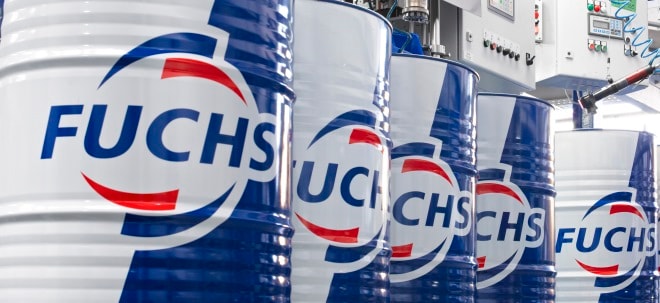PPL vs. Duke Energy: Which Utility Stock Offers Better Value for Now?
Werte in diesem Artikel
The Zacks Utility Electric - Power industry is experiencing a major transformation, fueled by rising electricity demand from data center growth, transportation electrification and grid modernization efforts. Utilities are making substantial investments to improve grid resilience, upgrade transmission and distribution infrastructure, integrate renewable energy sources and comply with evolving regulations. The sector continues to offer stable cash flows, steady returns and regular dividend payments, supported by significant capital expenditures focused on long-term growth and sustainability. Two prominent companies in the utility space are PPL Corporation PPL and Duke Energy Corporation DUK.The U.S. electric utilities industry is moving beyond its traditional image as a steady income provider, propelled by the accelerating shift toward clean energy. The utilities are using new technology, developing massive storage facilities to support the renewable power projects. Small nuclear power projects are developed to supply emission-free electricity and a few utilities have decided to restart idled nuclear power plants to meet rising demand for clean electricity from data centers.PPL is well-positioned to benefit from rising electricity demand across its service areas. Between 2025 and 2028, the company plans to invest $20 billion to enhance and modernize its infrastructure. These investments are aimed at strengthening the grid, supporting greater electrification and integrating advanced technologies to meet the growing power needs of data centers and other high-demand customers. PPL does not have a nuclear plant now, but is collaborating with DOE to find out the feasibility of building small nuclear reactors.Duke Energy is ramping up infrastructure investments to address the rising power demand across its service territories, driven by data center expansion and growing customer needs. The company plans to invest $87 billion between 2025 and 2029, with a focus on grid modernization and advancing the transition toward low-carbon energy sources. Duke Energy is also actively pursuing nuclear energy expansion as part of its long-term clean energy strategy, particularly in the Carolinas.PPL and DUK are among the most influential players in the utility sector. A closer comparison of their fundamentals can help identify which stock offers the stronger investment opportunity.PPL & DUK’s Earnings Growth ProspectsThe Zacks Consensus Estimate for PPL’s 2025 and 2026 earnings indicates year-over-year growth of 7.1% and 8.29%, respectively. Long-term (three to five years) earnings growth per share is pegged at 7.34%.Image Source: Zacks Investment ResearchThe Zacks Consensus Estimate for DUK’s 2025 and 2026 earnings implies year-over-year growth of 7.29% and 6.08%, respectively. Long-term (three to five years) earnings growth per share is pegged at 6.43%.Image Source: Zacks Investment ResearchCapital Expenditure PlansUtility operations are capital-intensive and a large investment is required for proper maintenance and expansion of operations. The decline in interest rates will definitely assist the utilities as it will reduce the cost of long-term capital projects. The decision of the Federal Reserve to cut the interest rate again by 25 basis points, taking the interest rate to a range of 3.75% to 4%, will be beneficial for the capital-intensive utility stocks.PPL’s capital investment plan primarily focuses on infrastructure construction projects for generation, transmission and distribution. Customers have been experiencing far fewer outages, courtesy of the ongoing investments in strengthening its infrastructure. PPL expects a regulated capital investment plan of $20 billion during 2025-2028.Duke Energy is currently focused on expanding its scale of operations, implementing modern technologies at its facilities and enhancing the renewable generation portfolio by investing heavily in infrastructure and expansion projects. DUK expects to spend $87 billion during the 2025-2029 period to strengthen its operations.Debt to CapitalThe Zacks Utilities sector is a capital-intensive one and huge investments are required at regular intervals to upgrade, maintain and expand operations. The usage of new evolving technology also requires investments. So, the utilities borrow from the market and add it to their internal cash generation to fund the long-term investments. The decline in interest rates from historic highs is going to be beneficial for the capital-intensive utilities.Duke Energy’s debt-to-capital currently stands at 61.74% compared with PPL’s 55.47%. Both companies are using debt to fund their business. Both DUK and PPL’s debt levels are higher than the industry’s 61.16%.Return on EquityReturn on equity (“ROE”) measures how efficiently the company is utilizing its shareholders’ funds to generate profits. PPL’s current ROE is 8.81% compared with DUK’s 9.85%. ROE of both companies is a bit lower than their industry’s 10.35%.Image Source: Zacks Investment ResearchPPL & DUK’s Dividend YieldUtility companies generally distribute dividends and increase shareholders’ value. Currently, the dividend yield for PPL is 2.95%, while the same for DUK is 3.39%. The dividend yield of DUK is better than its industry yield of 3.04%.Duke Energy has raised its dividend five times in the past five years, while PPL has raised dividend four times.ValuationPPL currently appears to trade at a premium compared with Duke Energy on a Price/Earnings Forward 12-month basis. (P/E- F12M).PPL and DUK are currently trading at 18.84X and 18.7X, respectively, compared with the industry’s 15.42X.Image Source: Zacks Investment ResearchPrice PerformanceIn the past six months, PPL’s shares have gained 1.1% compared with DUK’s return of 2.5%. Image Source: Zacks Investment ResearchRounding UpPPL and Duke Energy are making significant investments to modernize their infrastructure and meet rising electricity demand in their service region. Both stocks have huge potential in the energy space and can offer significant growth opportunities for investors.From the above discussion, we can find Duke Energy’s debt to capital is higher than PPL, but its ROE, dividend yield and capital expenditure plan are more extensive than PPL. DUK’s valuation is cheaper and its price performance is better than PPL. It is evident that DUK currently has a Zacks Rank #2 (Buy) and a clean edge on PPL, which has a Zacks Rank #4 (Sell).You can see the complete list of today’s Zacks #1 Rank (Strong Buy) stocks here. Zacks' Research Chief Picks Stock Most Likely to "At Least Double"Our experts have revealed their Top 5 recommendations with money-doubling potential – and Director of Research Sheraz Mian believes one is superior to the others. Of course, all our picks aren’t winners but this one could far surpass earlier recommendations like Hims & Hers Health, which shot up +209%.See Our Top Stock to Double (Plus 4 Runners Up) >>Want the latest recommendations from Zacks Investment Research? Today, you can download 7 Best Stocks for the Next 30 Days. Click to get this free report PPL Corporation (PPL): Free Stock Analysis Report Duke Energy Corporation (DUK): Free Stock Analysis ReportThis article originally published on Zacks Investment Research (zacks.com).Zacks Investment ResearchWeiter zum vollständigen Artikel bei Zacks
Übrigens: Duke Energy und andere US-Aktien sind bei finanzen.net ZERO sogar bis 23 Uhr handelbar (ohne Ordergebühren, zzgl. Spreads). Jetzt kostenlos Depot eröffnen und Neukunden-Bonus sichern!
Ausgewählte Hebelprodukte auf Duke Energy
Mit Knock-outs können spekulative Anleger überproportional an Kursbewegungen partizipieren. Wählen Sie einfach den gewünschten Hebel und wir zeigen Ihnen passende Open-End Produkte auf Duke Energy
Der Hebel muss zwischen 2 und 20 liegen
| Name | Hebel | KO | Emittent |
|---|
| Name | Hebel | KO | Emittent |
|---|
Quelle: Zacks
Nachrichten zu Duke Energy Corp
Analysen zu Duke Energy Corp
| Datum | Rating | Analyst | |
|---|---|---|---|
| 24.07.2018 | Duke Energy Sector Outperform | Scotia Howard Weil | |
| 06.07.2018 | Duke Energy Market Perform | BMO Capital Markets | |
| 26.02.2018 | Duke Energy Buy | Deutsche Bank AG | |
| 04.08.2017 | Duke Energy Market Perform | BMO Capital Markets | |
| 07.11.2016 | Duke Energy Sector Perform | Scotia Howard Weil |
| Datum | Rating | Analyst | |
|---|---|---|---|
| 24.07.2018 | Duke Energy Sector Outperform | Scotia Howard Weil | |
| 06.07.2018 | Duke Energy Market Perform | BMO Capital Markets | |
| 26.02.2018 | Duke Energy Buy | Deutsche Bank AG | |
| 04.08.2017 | Duke Energy Market Perform | BMO Capital Markets | |
| 22.02.2016 | Duke Energy Buy | Argus Research Company |
| Datum | Rating | Analyst | |
|---|---|---|---|
| 07.11.2016 | Duke Energy Sector Perform | Scotia Howard Weil | |
| 19.05.2016 | Duke Energy Neutral | Mizuho | |
| 18.03.2016 | Duke Energy Neutral | Mizuho | |
| 17.11.2015 | Duke Energy Sector Perform | Scotia Howard Weil | |
| 09.11.2015 | Duke Energy Neutral | UBS AG |
| Datum | Rating | Analyst | |
|---|---|---|---|
| 27.05.2005 | Update Duke Energy Corp.: Underperform | Goldman Sachs |
Um die Übersicht zu verbessern, haben Sie die Möglichkeit, die Analysen für Duke Energy Corp nach folgenden Kriterien zu filtern.
Alle: Alle Empfehlungen

